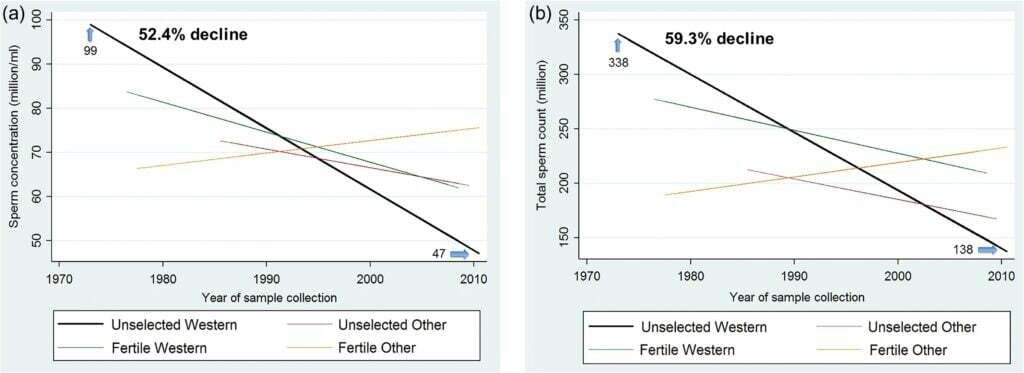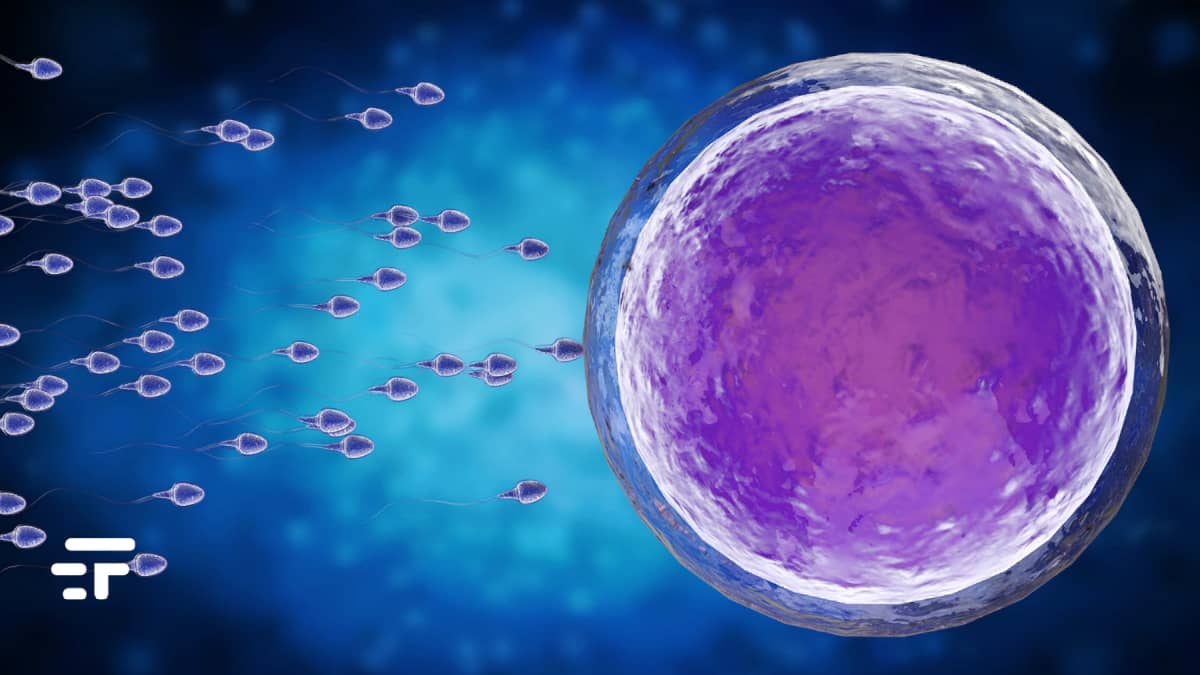Un recent study showed that sperm count has decreased by more than 50% since 1973. The cause? Probably the harmful chemicals found in plastic, and the pollution produced by dirty energy sources.
Based on a previous study from 2017, the researchers observed a drop in sperm count by 51% in 53 countries on all continents: the world is sliding towards a global fertility crisis.
And it's also about to get worse
The problem is not only in the number: also because in any case a high number of spermatozoa is not necessarily an indication of fertility. If we talk about density, the decrease in sperm concentration from 1972 to 2000 was 1,16%. In the last 20 years, however, it has more than doubled, decreasing by another 2,62% since. All parameters that can indicate sperm cells (which are numerous or fewer) that are not healthy, or that are not mobile enough to increase the chances of conception.
Are we talking about motility? The ability of sperm to move and “swim” to reach the goal. Another study , published in 2019, found that this too has decreased: by well 10% in the last 16 years.

Why are sperm at risk of becoming "endangered"?
The causes are not yet fully understood, but an increasing number of searches it points to various chemicals that disrupt endocrines, confuse hormones, and affect reproductive capacity as the culprits.
Among these the phthalates: a big problem, because they are practically everywhere in commonly used objects. Plastic, soap, vinyl floors. And almost everything that ends up under the label of "microplastic", the residue of all the plastic objects on the planet now present everywhere, from food what shall we eat air that we breathe, even in the placenta and in mother's milk, or into the bloodstream human. We are committing suicide.

The canary in the mine
“Our findings are the scientific equivalent of a canary in a coal mine,” says the professor Hagai Levine, one of the authors of the study. “We have in our hands the alarm bell of a very serious problem, which threatens the survival of humanity. Global action is urgently needed to reduce exposure and behaviors that threaten our reproductive health."
If the rate of sperm decline were constant, following the curve of the meta-analysis done in 2017, we would have a number of "effective" sperm nearly zero by 2045. To say it is the co-author of the study, Shanna swan.
“This means by 2045 most people wanting a child may have to use assisted reproduction.”
Maybe this is the future we deserve, but it's certainly not what we want: and it's not what we have to live.



Comments are closed.